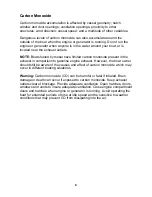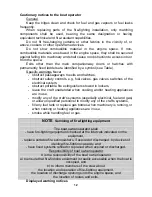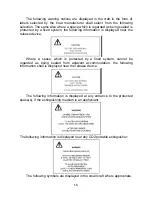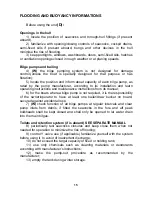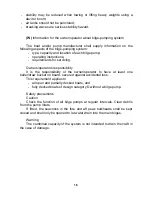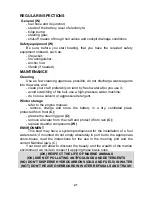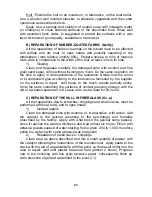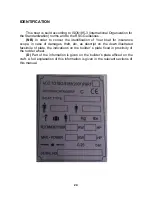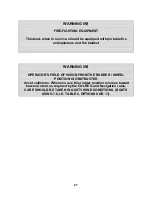
15
FLOODING AND BUOYANCY INFORMATIONS
Before using the unit
(D):
Openings in the hull
1) locate the position of seacocks and through-hull fittings (if present
aboard).
2) familiarize with opening/closing controls of seacocks, cockpit drains,
semi-fixed sills if present aboard, bungs and other devices in the hull
minimise the risk of flooding.
3) keep portlights, windows, washboards, doors, semi-fixed sills, hatches
or ventilation openings closed in rough weather or at planing speeds.
Bilge pumps and bailing
4)
(W)
the bilge pumping system is not designed for damage
control.(unless the boat is specially designed for that purpose or has
flotation);
5) locate the position and inform about capacity of each bilge pump, as
rated by the pump manufacturer, according to its installation and learn
operating instructions and maintenance instructions from its manual;
6) for the boats where a bilge pump is not required, it is the responsibility
of the owner/operator to have at least one bailer/draw bucket on board,
secured against accidental loss;
7)
(W)
check function of all bilge pumps at regular intervals and clear
pump inlets from debris; if fitted the seacocks in the fore and aft peak
bulkheads shall be kept closed and shall only be opened to let water drain
into the main bilges.
Toilets and retention system (if is aboard) SEE SEPARATE MANUAL
8) periodically test seacocks closures and keep close them when not
needed for operation to minimize the risk of flooding;
9) control Y valve use (if applicable) familiarize yourself with the system
before using it to avoid of inadvertent discharge;
10) do not exceed the target capacity of fixed or holding tank;
11) use only chemicals such as cleaning materials or deodorants
according with manufacturer’s instructions;
12) make the pump-out procedure as recommended by the
manufacturer;
13) empty the tank during winter storage.
Содержание Europa Sport
Страница 14: ...14...








